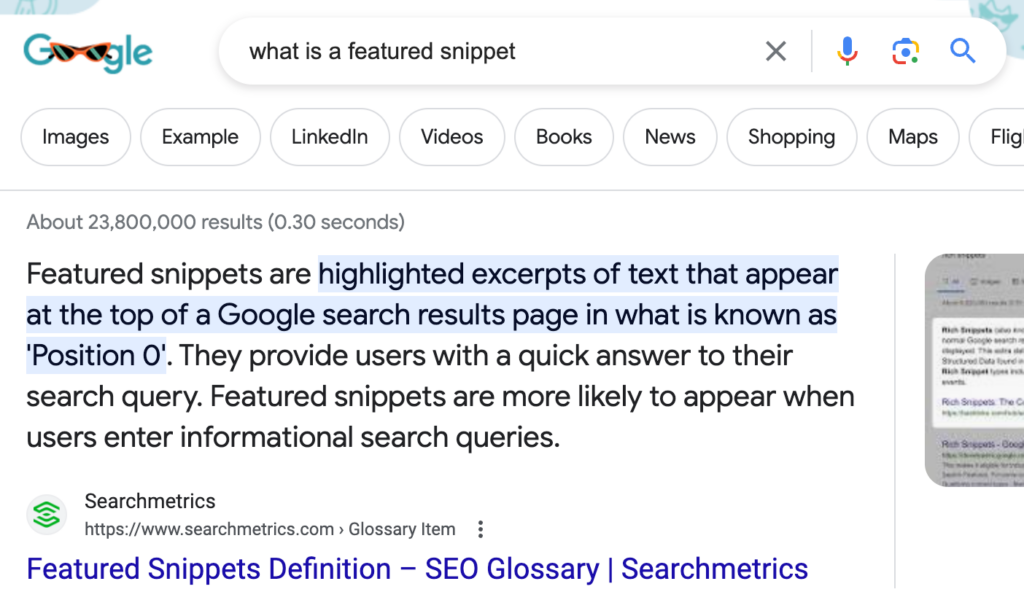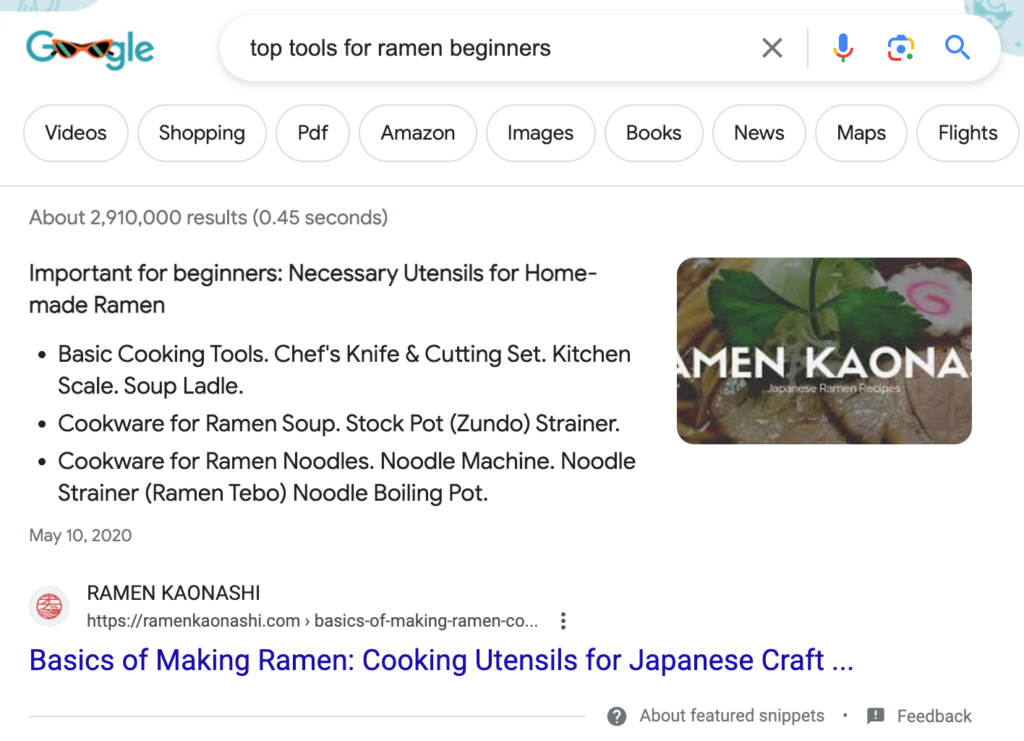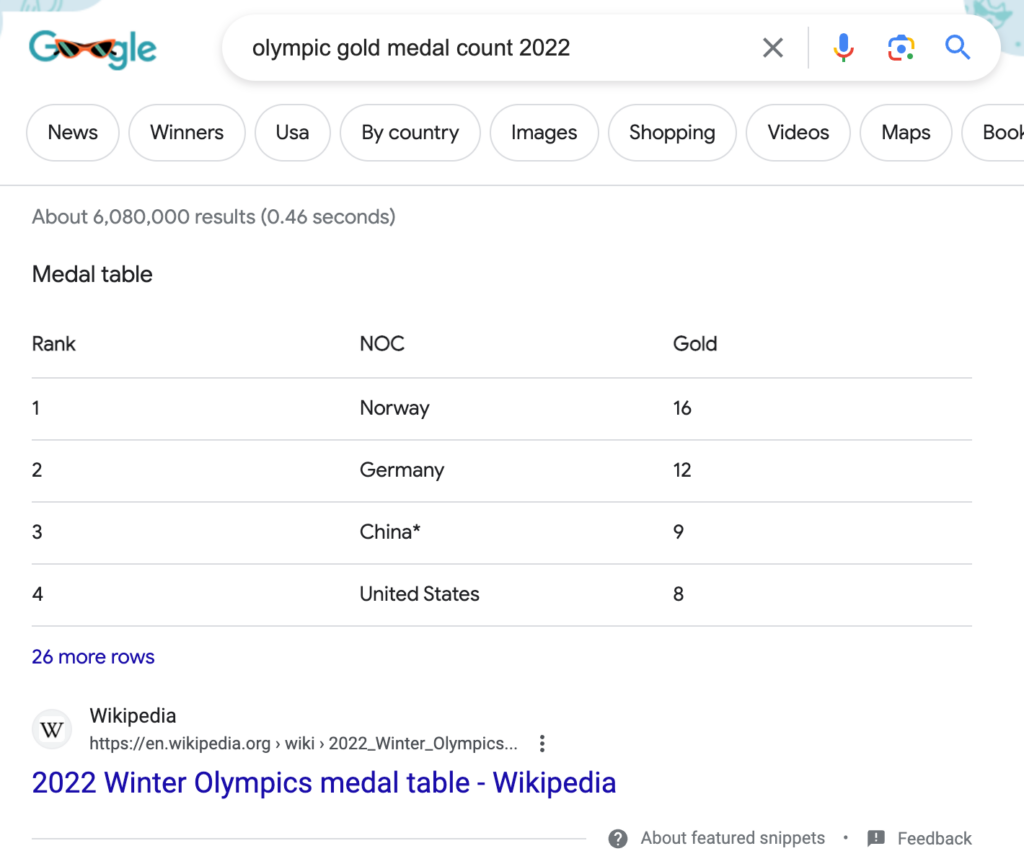Your cart is currently empty!
A featured snippet is a selected search result that appears on top of Google’s organic results below the ads in a box. Featured snippets appear in various formats, including summaries and lists.
It’s often called “position zero” because it appears above the first organic search result. Google’s goal with featured snippets is to provide a concise, direct answer to a user’s question without the need to click through to a website.
Importance of Featured Snippets
Featured snippets can significantly impact your website’s visibility, click-through rates, and traffic. Here’s why they matter:
- Increased Visibility: Featured snippets take up more real estate on search results pages (SERPs). This enhanced visibility can lead to higher click-through rates.
- Authority and Trust: When Google selects your website’s content as the best answer to a user’s query, it positions your site as an authoritative and trustworthy source of information.
- Increased Traffic: By featuring your content at the top of search results, featured snippets can drive more traffic to your site.
Types of Featured Snippets
To help solidify your understanding, let’s look at each of the four types:
- Paragraph: These are the most common type. They offer a direct answer or explanation to a user’s query.
- List: These can be bulleted or numbered. They often appear for posts with a list, such as “top 10” articles or recipes.
- Table: Google uses these to display data that’s best understood in a table format.
- Video: Google selects a portion of a video and jumps right to that part in the result.
Now let’s look at each of these in more detail, with screenshot examples.
Paragraph Snippets
If you search for “What is a Featured Snippet?” on Google, you may see a paragraph snippet that offers a concise definition. It might look something like this:

These provide quick answers to questions and try to highlight the most essential information. If you click on the link, it will usually create a jump link to the content with the highlights.
List Snippets
When you search for answers that require small lists, Google might provide a bulleted list snippet. This could look like:

These usually don’t have the full scope of the information, so clicking through is still pretty common. Sometimes the lists will only show partial samples of larger sets too.
Table Snippets
For a query like “Olympic gold medal count”, Google might display a table snippet that shows the top countries and their respective gold medal counts:

These types of featured snippets are best for small tables of information, and often won’t show many rows.
Video Snippets
These appear for highly specific queries that often need visual help. Let’s go with this classic SERP:

Video snippets are pretty rare. Usually, Google will display YouTube options of related videos instead, but on specific instances like this it might show a snippet.
How to Get Featured Snippets
Attaining that coveted “position zero” in Google’s search results can significantly increase your website’s visibility. Let’s explore some strategies for getting there:
1. Understand Your Audience’s Questions
To appear in a featured snippet, you first need to understand the types of questions your audience is asking.
Look for questions or phrases your audience frequently uses, as these are potential opportunities for featured snippets. Try using these methods:
- Use keyword research tools like Ahrefs and Semrush.
- Analyze your website’s search queries in Google Search Console.
- Check out forums in your niche.
Finding what questions matter to your audience and answering them provides a solid experience and encourages engagement.
2. Provide Clear, Concise Answers
Once you’ve identified common questions, aim to answer these questions clearly and concisely in your content.
For paragraph snippets, an answer between 40 and 50 words often works best. Your answer should be easy to understand, even for someone with no prior knowledge of the topic.
3. Structure Your Content
Google often pulls snippets from well-structured content. Try these methods:
- Use H2 and H3 headings to separate different sections of your content. Make it easy to scan and understand.
- Use bullet points or numbered lists where appropriate, especially when creating how-to guides or listing items.
- For data-driven content, consider using tables to clearly display the information.
Aim for the right structure with the right type of featured snippet. Remember the options, and provide answers in useful formats.
4. Optimize Your SEO
While Google can pull featured snippets from anywhere on a page, it’s often from content that already ranks on the first page of search results. Therefore, traditional SEO best practices still apply. Ensure your content targets relevant, valuable keywords, uses meta tags well, and other On-Page SEO techniques.
5. Keep Your Content Updated
Keeping your content fresh and updated can improve your chances of getting a featured snippet. Regularly check and update your posts to ensure all information is current and accurate.
It’s not guaranteed that your content will be chosen for a featured snippet, even if you follow these strategies. However, implementing these tactics can certainly increase your chances, and even if you don’t get a snippet, you’ll likely improve your overall SEO and user experience, which is a win in itself. For more, see Google’s documentation on how featured snippets work.
Featured Snippet SEO Tools
Consider using specialized SEO tools to monitor and analyze your featured snippet performance. They provide detailed insights into your site’s current standing in terms of featured snippets and help uncover new opportunities for content optimization.
- Semrush: A comprehensive SEO tool that tracks your keyword rankings and identifies if any of them have resulted in a featured snippet or other SERP Features.
- Ahrefs: Another widely used SEO platform, offers a Rank Tracker tool that monitors your keywords and their associated SERP features, including featured snippets.
- Moz: Their Rank Tracker tool provides valuable insights into how your keywords are performing in terms of triggering SERP features, including featured snippets.
While these tools have unique features and interfaces, their common purpose is to help you understand, monitor, and improve your featured snippet performance. Depending on your specific needs and preferences, you might find one tool more useful or user-friendly than the others.
Bottom Line
Featured snippets play a significant role in SEO, helping to enhance your website’s visibility, perceived authority, and traffic. By understanding what featured snippets are, why they’re important, and how to optimize for them, you’re well on your way to boosting your website’s performance in search engine results.
SEO is a continuous process that requires patience, persistence, and a keen eye for detail. Keep learning, stay updated, and strive for improvement. ?
Featured Snippet News & Updates
Check out these articles for important changes with featured snippets.
- August 8, 2023: Google announces removing FAQ and How-To featured snippets from SERPs. This was initially done on just mobile, but they extended it to desktop results too on September 13.
Subscribe to our newsletter for more SEO news and updates about SERPs. ?️
Topics






